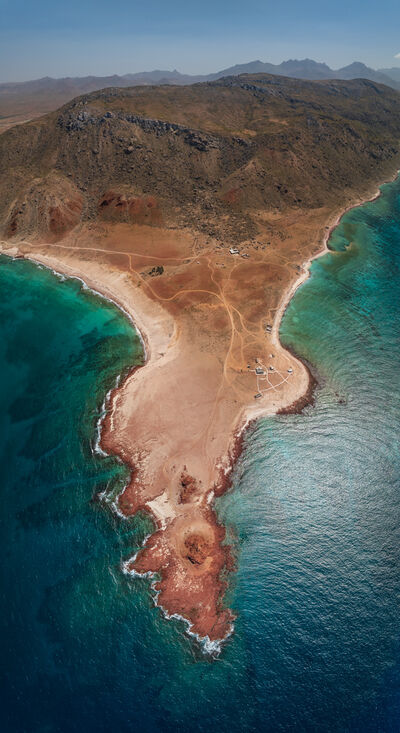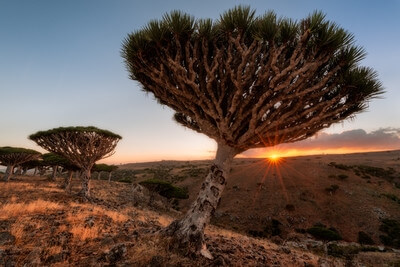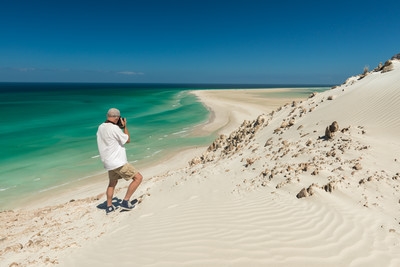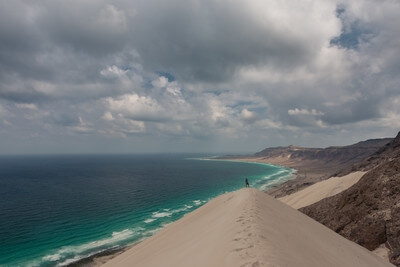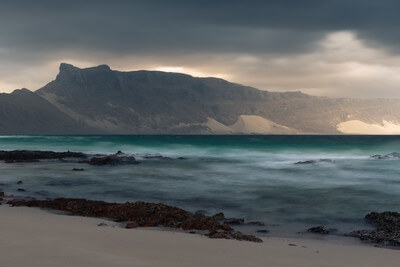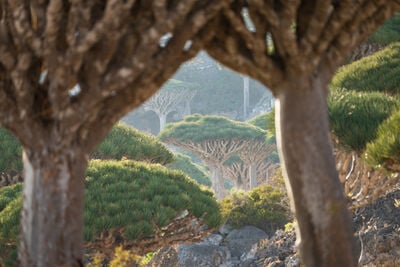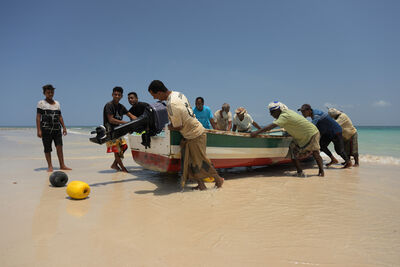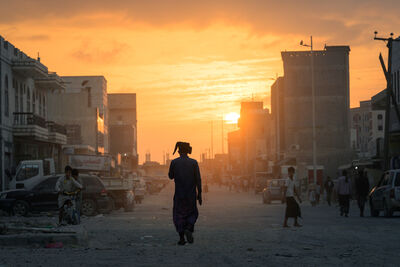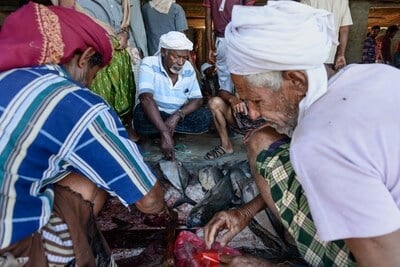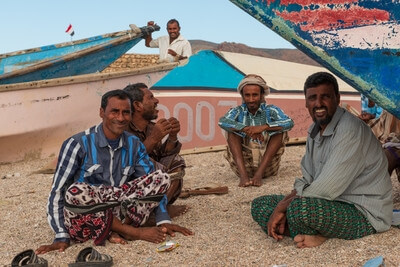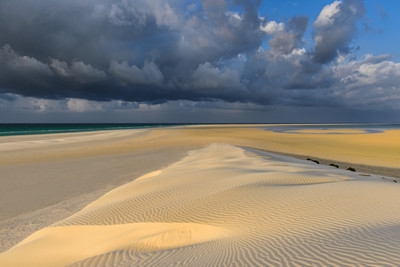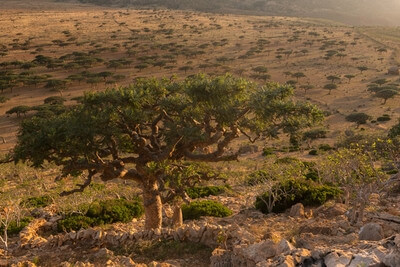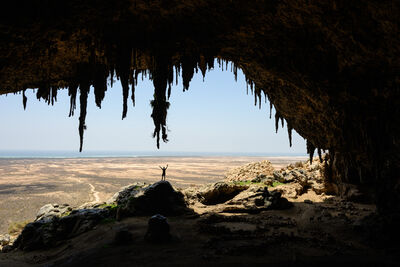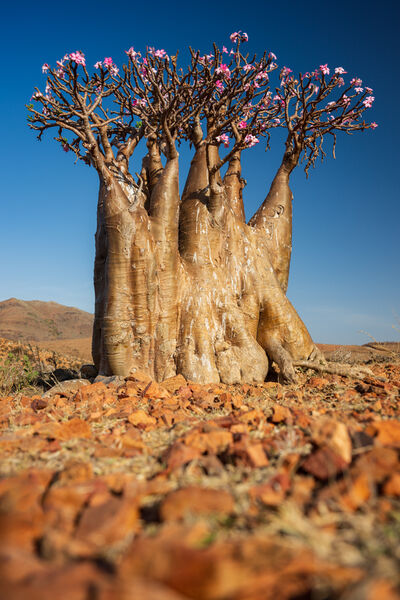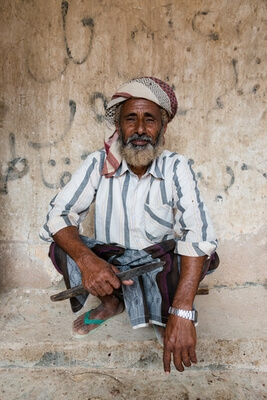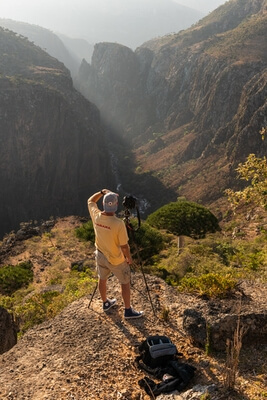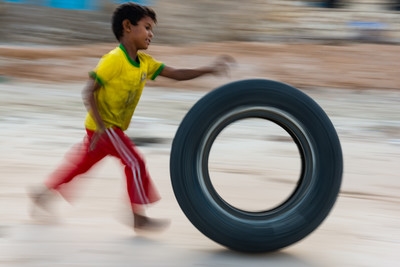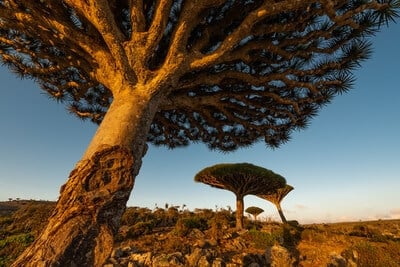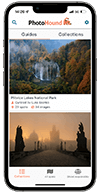The photography guide to
 Socotra Island
Socotra Island
Socotra Island photography guide
Our contributors have added 29 photo spots to this Socotra Island photo guide. Have you discovered an amazing new location in Socotra Island?
Introduction
Socotra Island, a remote yet mesmerizing location, lies in the Arabian Sea, about 240 kilometers east of the Horn of Africa and 380 kilometers south of the Arabian Peninsula. This isolated island, part of Yemen, is strategically situated at the confluence of the Arabian Sea and the Indian Ocean, making it a critical point in maritime routes. Socotra comprises four islands and two rocky islets which form part of an archipelago. The main island itself is characterized by its rugged mountains, which rise to 1,500 meters at their highest point, and its arid plains, creating a landscape that varies dramatically.
The island has a sparse population of around 60,000 people, whose origins trace back to various ethnic groups, primarily of South Arabian descent. Despite its political ties to Yemen, Socotra has remained relatively isolated from mainland conflicts, maintaining a unique blend of stability and cultural preservation amidst Yemen's more tumultuous state.
Socotra is a dream destination for nature enthusiasts and photographers alike due to its distinctive and diverse ecosystems. The island's natural habitats range from dense misty forests to vast sand dunes, providing sanctuary to an extraordinary variety of endemic species. The flora and fauna of Socotra are unparalleled; about a third of its 800 plant species are found nowhere else on Earth. The iconic Dragon's Blood Tree, with its umbrella-shaped canopy and red sap, epitomizes the island's otherworldly landscape.
For photographers, Socotra offers a canvas of striking contrasts and vivid details. The unique biodiversity, coupled with the surreal landscapes, presents endless opportunities for capturing images that are as captivating as they are rare. The interaction of light and landscape, along with the vibrant culture of its inhabitants, makes Socotra a place where every snapshot tells a story of isolation, beauty, and survival. This combination of natural wonders and visual splendors makes Socotra not just a place to visit, but a place to explore and immortalize through the lens.
Most popular Socotra Island photo spots
Top Locations for Photography on Socotra Island
- Detwah Lagoon: This coastal marvel is a highlight for any photography enthusiast visiting Socotra. Detwah Lagoon is renowned for its shimmering turquoise waters contrasted against the rugged coastline. The lagoon's shallow waters allow for vibrant reflections during the golden hours of sunrise and sunset, creating a perfect backdrop for mesmerizing photos. The area is also a designated protected zone, which helps preserve its pristine condition.
- Dixam Plateau: Situated in the heart of Socotra, the Dixam Plateau offers breathtaking views of the island’s central mountains. This location is famous for its ancient Dragon’s Blood Trees, which stand out dramatically against the barren, rocky landscape. Photographers will find the contrast of these peculiar trees against the clear blue skies an irresistible subject, particularly during the late afternoon when the light casts dramatic shadows and highlights the rugged textures of the plateau.
- Arher Sand Dunes: Arher is a unique spot where imposing sand dunes meet a freshwater creek flowing into the sea. The convergence of desert sands with the ocean creates a surreal landscape that is ideal for dynamic landscape photography. The area is especially striking during sunset when the sinking sun casts golden hues over the dunes, providing a stunning contrast to the deep blues of the ocean.
- Firmihin Forest: Tucked away on the higher grounds of Socotra, Firmihin Forest is dominated by the iconic Dragon’s Blood Trees. The forest offers a mystical ambiance that is quite different from other areas on the island. The dense arrangement of these trees creates a canopy that plays with light and shadow, making it an excellent location for capturing moody, atmospheric shots that convey a sense of depth and intrigue.
- Homhil Plateau: Known for its lush vegetation and scenic vistas, Homhil Plateau is another can’t-miss photography destination on Socotra. This area is home to several natural pools and waterfalls, surrounded by rich flora including frankincense trees and endemic plants. The vibrant greens of the plateau provide a stunning contrast to the rest of the island’s arid scenery, and the presence of cascading waters adds a dynamic element to photographs.
Practical Information for travellers to Socotra
Reaching Socotra
The most convenient way to travel to Socotra Island is by flying with Air Arabia from Abu Dhabi. The airline operates flights twice a week, making it a practical option for travelers. Due to the unique logistics and limited flight schedules, it's highly advisable to book your flight through a local travel agency based in Socotra. These agencies are well-versed in the intricacies of travel to the island and can provide up-to-date information and assistance.
Visa Requirements
Visitors to Socotra need a visa, which can also be arranged through a local agency. This simplifies the process, as these agencies are experienced in handling the necessary paperwork and can ensure all formalities are completed smoothly.
Best Seasons to Visit for Photography
Winter is an excellent time to visit Socotra for those who prefer cooler temperatures and fewer tourists. During this season, the island's mountainous regions are lush and green, offering stunning vistas and a pleasant climate for hiking and exploration.
March and April, this period is particularly magical as it coincides with the blossoming of the indigenous bottle trees. The landscape transforms with these spectacular blooms, making it a perfect time for photography and nature enthusiasts.
What to Pack for Socotra
- Clothing: Light, breathable clothing suitable for warm weather, along with a sweater or jacket for cooler evenings. Sturdy hiking shoes are essential for exploring the rugged terrain.
- Sun Protection: High SPF sunscreen, a wide-brimmed hat, and sunglasses to protect against the sun’s strong rays.
- Camera Gear: Don't forget your camera, multiple spare batteries, and memory cards to capture the breathtaking scenery. Bring a power bank to fill your batteries on the fly. A drone is a good idea too. Polarising filter will do magic on the colour of the water and to eliminate glare from the bottle trees.
- First Aid Kit: Include basic medical supplies, as facilities on the island are limited.
- Reusable Water Bottle: Stay hydrated while being environmentally conscious.
- Flashlight or Headlamp: Useful for any night-time activities or emergencies.
- Snorkelling gear: There is ample marne life in the waters of Socotra and you can enjoy this simply by snorkelling.
- Granola or protein bars: Something to snack on on longer drives or early mornings.
Internet
Internet access in Socotra can still be tricky. In Hadibo, some hotels offer Wi-Fi, but the connection is slow. Recently, some places have started offering Starlink internet. The best advice we can give is to acquire an Etisalat mobile SIM card while in Abu Dhabi. Data works in Socotra, but it is limited to a slow 3G connection. Some areas still lack reception, but with mobile internet, you should be able to get in touch with friends and family or send a business email when needed.By preparing accordingly and choosing the right season for your visit, you can fully enjoy the unique beauty and tranquil solitude of Socotra Island.
Safety when travelling to Socotra
Traveling to and around Socotra Island is generally considered safe, especially compared to other parts of Yemen, due to its isolation and the peaceful nature of its local population. However, like any travel destination, it's important to consider several safety aspects to ensure a smooth and secure trip:
Political Stability
Socotra is relatively insulated from the mainland conflicts affecting Yemen, maintaining a more stable environment. The island has its own local government, and while it's politically aligned with Yemen, the impact of mainland unrest is minimal here. This isolation helps preserve a peaceful atmosphere that benefits both residents and visitors.
Health and Medical Facilities
Medical facilities on Socotra are quite basic, with limited resources and capabilities. It’s advisable to travel with a comprehensive travel health insurance that includes coverage for medical evacuation. Visitors should also bring any necessary medications with them, as well as a well-stocked first aid kit, as pharmacies on the island might not carry everything needed.
Local Laws and Customs
Respect for local customs and traditions is crucial; Socotra has a conservative Muslim community. Dress modestly, and always ask for permission before photographing people. Understanding and adhering to these practices will help in having a respectful and trouble-free experience.
Environmental Hazards
Socotra's natural environment can pose its own set of challenges, such as rugged terrains and remote areas that require sturdy footwear and possibly a local guide to navigate safely. The weather can also change rapidly, especially in mountainous regions, so appropriate clothing and equipment are necessary.
Transportation
Getting around the island typically involves 4x4 vehicles, as many of the roads are unpaved and can be challenging to navigate. Hiring a vehicle with a driver who knows the local terrain is generally recommended. For those adventurous enough to drive themselves, it’s important to be experienced in off-road driving.
Security Measures
Although Socotra is safer than many other destinations, standard travel safety practices should still be followed. Keep valuables secure, avoid traveling alone at night, and stay informed about the local situation through your embassy or local contacts.
Responsible Travel and Photography in Socotra
When visiting Socotra Island, it is crucial to acknowledge that the current infrastructure does not adequately support the increasing numbers of tourists. To minimize our impact on this fragile ecosystem and its communities, responsible practices must be adhered to. Visitors should ensure they do not litter and use designated toilet facilities instead of the natural landscape. It's also important to resist the temptation to take natural souvenirs from the island, as this can disrupt the delicate balance of the environment.
Additionally, respecting the Muslim traditions and habits of the local community is essential, especially during the holy month of Ramadan. Tourists should be considerate of fasting hours and partake in activities discreetly, honoring the cultural solemnity of this period. Photographing local women is particularly sensitive and generally unwelcome; visitors should restrain from doing so to respect privacy and local customs.
Interacting with the local children requires sensitivity; instead of giving money or individual gifts, which can create dependencies and inequalities, consider contributing more constructive items. Providing useful supplies such as pens and notebooks to parents or teachers supports educational efforts and benefits the community holistically. A soccer ball, for instance, can be a wonderful gift for the community, encouraging play and teamwork among children without singling out individuals. By adopting these practices, visitors can enjoy the unique beauty of Socotra Island while ensuring they contribute positively to its preservation and the well-being of its inhabitants.
Links
Practical info on visiting Socotra island
Photography tour to Socotra island
Photos of Socotra island
Curated By
Luka Esenko Team
We hope you enjoy this guide to photographing Socotra Island - don't forget to share your images on PhotoHound and tag us on social media using hashtag #photohound
